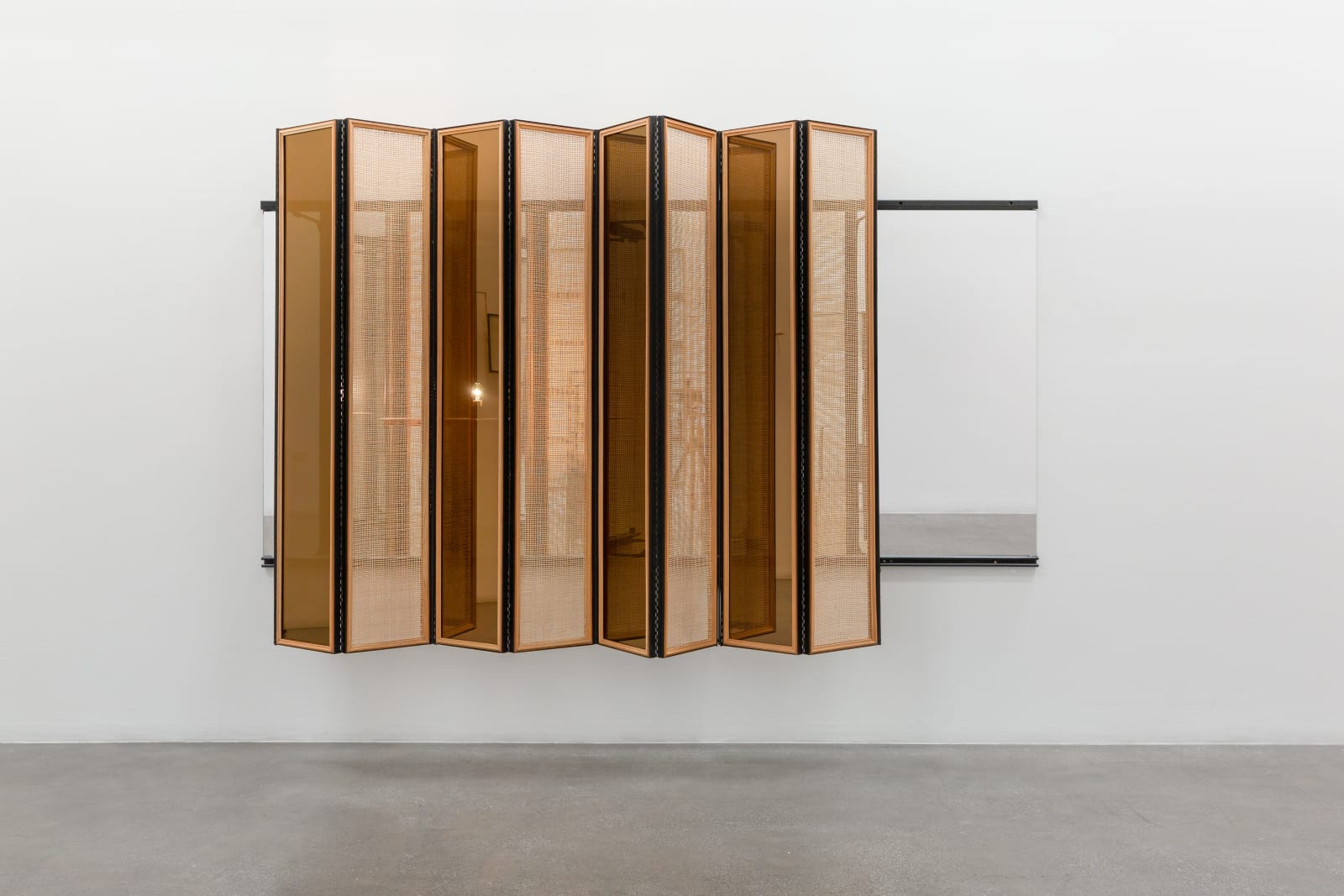Ishmael Randall-Weeks b. 1976
Two-Way Mirror, Biombo/Mashrabiya, 2020
Iron, mat, wood, glass, mirror
280 x 45 x 180 cm
110 1/4 x 17 3/4 x 70 7/8 in
Weight: 180 kg – 250 kg approx.
110 1/4 x 17 3/4 x 70 7/8 in
Weight: 180 kg – 250 kg approx.
Copyright The Artist
Biombo/Mashrabiya is a hybrid that involves architecture of self-consciousness where the uses of the two-way mirrors (in an ode to Dan Graham’s pavilions and interrogation rooms) are simultaneously transparent and...
Biombo/Mashrabiya is a hybrid that involves architecture of self-consciousness where the uses of the two-way mirrors (in an ode to Dan Graham’s pavilions and interrogation rooms) are simultaneously transparent and reflective. They are about looking and being looked at and about ac- cess of information and being information.
Biombo/Mashrabiya is comprised of hand woven rattan screens framed by wood and metal. Juxtaposed with two-way mirrors on a moving track, the work floats off of a mirror on the wall with a suspended copper shelf, carrying a light bulb. The screens invite the viewer to decide on the extent of the reflection, deception, seduction, and secrecy to be had in this space. A space with a metaphorical relationship to Foucault’s Heterotopias in that it depicts a space of otherness that is simultaneously physical and mental, and neither here nor there, but still nurtured by the hidden presence of the sacred; a sphere that is both private and public, familiar and social.
Biombo/Mashrabiya is comprised of hand woven rattan screens framed by wood and metal. Juxtaposed with two-way mirrors on a moving track, the work floats off of a mirror on the wall with a suspended copper shelf, carrying a light bulb. The screens invite the viewer to decide on the extent of the reflection, deception, seduction, and secrecy to be had in this space. A space with a metaphorical relationship to Foucault’s Heterotopias in that it depicts a space of otherness that is simultaneously physical and mental, and neither here nor there, but still nurtured by the hidden presence of the sacred; a sphere that is both private and public, familiar and social.

